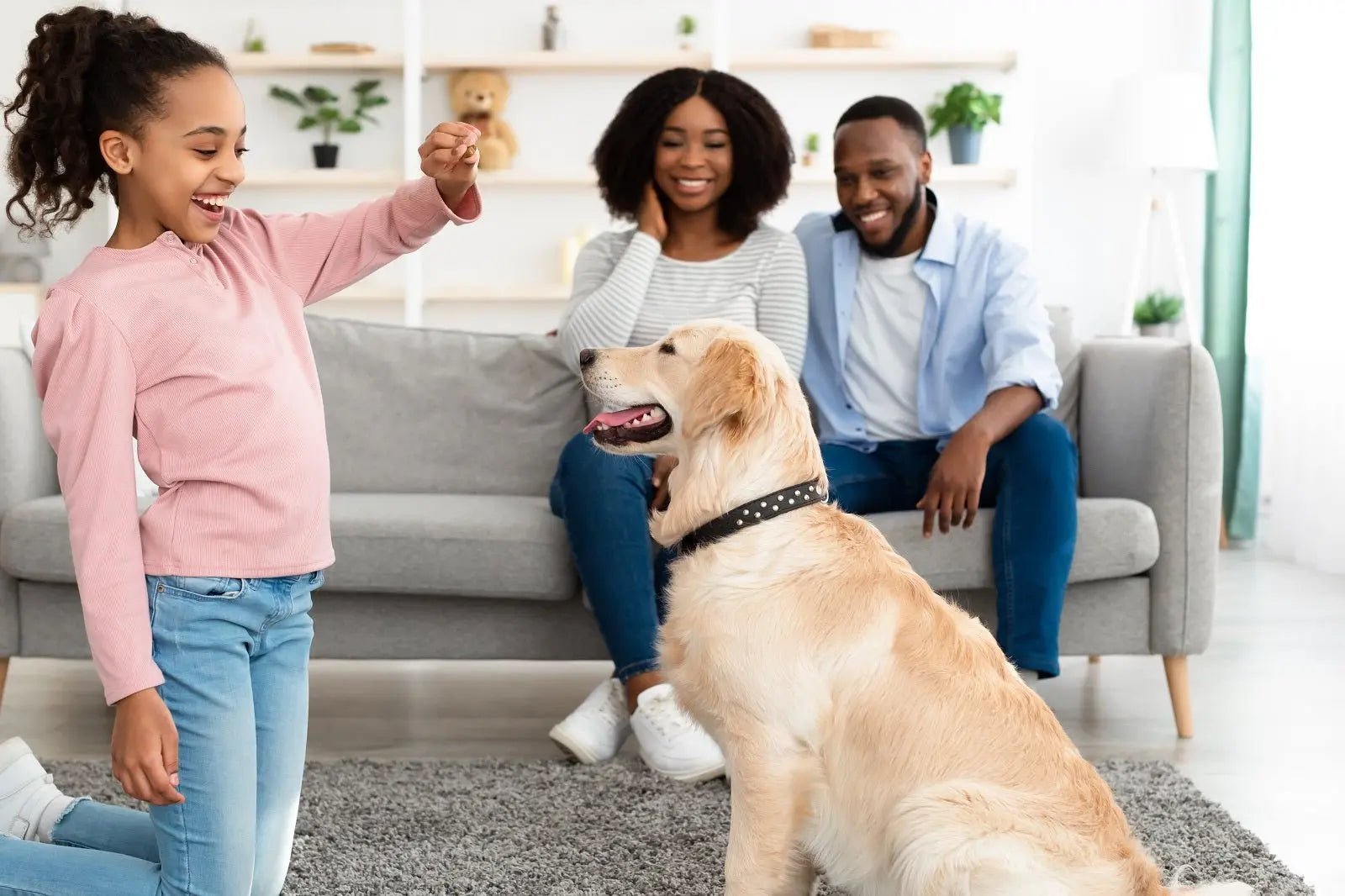Article: 5 Positive Dog Training Techniques Every Pet Owner Should Know

5 Positive Dog Training Techniques Every Pet Owner Should Know
5 Positive Dog Training Techniques Every Pet Owner Should Know

Understanding positive dog training
As a responsible pet owner, it is crucial to understand the importance of positive dog training. Positive dog training is a method that focuses on rewarding desirable behaviors, rather than punishing undesirable ones. By using positive reinforcement techniques, you can create a strong bond with your furry friend and encourage them to exhibit good behavior.
Positive dog training is based on the principle that dogs are more likely to repeat behaviors that are followed by rewards. This means that instead of scolding or punishing your dog for misbehaving, you should reward them when they behave appropriately. This approach not only helps in teaching your dog basic commands but also builds trust and strengthens the bond between you and your pet.
The benefits of positive dog training
Positive dog training has numerous benefits for both you and your furry companion. Firstly, it promotes a positive and loving environment. By focusing on rewarding good behavior, you create a harmonious atmosphere where your dog feels safe and loved. This leads to better mental health and reduces the likelihood of behavioral issues such as aggression or anxiety.
Secondly, positive dog training is highly effective. Dogs are intelligent creatures who respond well to positive reinforcement. By rewarding desired behaviors, you can quickly teach your dog basic commands such as sit, stay, and come. This not only makes your life easier but also ensures the safety of your dog in various situations.

Lastly, positive dog training strengthens the bond between you and your pet. When you use positive reinforcement techniques, your dog learns to associate your presence with positive experiences. This creates a deep sense of trust and loyalty, making your dog more obedient and eager to please you.
Positive reinforcement techniques
Positive reinforcement is the cornerstone of positive dog training. This technique involves rewarding your dog with treats, praise, or playtime when they exhibit a desired behavior. By using positive reinforcement, you can motivate your dog to repeat the behavior in the future.
To effectively use positive reinforcement, you must identify the behaviors you want to encourage. For example, if you want to teach your dog to sit, you can reward them with a treat every time they sit on command. It is important to provide the reward immediately after the desired behavior, so your dog can make the connection between the behavior and the reward.
Consistency is key when using positive reinforcement. Make sure to reward your dog every time they exhibit the desired behavior, and gradually reduce the frequency of rewards as they become more proficient. This will reinforce the behavior and make it more likely to become a habit.
Clicker training for dogs
Clicker training is a popular positive dog training technique that involves using a small device called a clicker to mark desired behaviors. The clicker makes a distinct sound that acts as a signal to your dog that they have done something right. This technique is highly effective because it provides immediate feedback and helps your dog understand which behavior is being rewarded.
To start clicker training, you need to associate the sound of the clicker with a reward. Begin by clicking the device and immediately giving your dog a treat. Repeat this process several times until your dog starts to associate the click with the reward. Once your dog understands the connection, you can use the clicker to mark desired behaviors and then reward them accordingly.
Clicker training can be used to teach a wide range of commands and tricks. For example, you can use the clicker to teach your dog to shake hands or roll over. The key is to break down the behavior into small steps and reward your dog for each incremental progress. With consistency and patience, your dog will quickly learn new commands through clicker training.

Reward-based training methods
Reward-based training methods are an essential part of positive dog training. These methods involve using treats, toys, or praise as rewards to reinforce good behavior. By providing a positive stimulus after your dog exhibits the desired behavior, you can encourage them to repeat the behavior in the future.
When using reward-based training, it is important to choose the right rewards for your dog. Some dogs are highly food motivated and respond well to treats, while others may prefer playtime or praise. Experiment with different rewards to find what motivates your dog the most.
To effectively use reward-based training, you should start with small, achievable goals. For example, if you are teaching your dog to stay, begin by rewarding them for staying in place for a few seconds, and gradually increase the duration. By setting your dog up for success and rewarding them for their efforts, you can build their confidence and make the training process enjoyable for both of you.
Using treats and toys in positive dog training
Treats and toys are valuable tools in positive dog training. They serve as rewards and can be used to reinforce desired behaviors. When using treats, it is important to choose high-value treats that your dog finds irresistible. This will make the reward more enticing and increase the effectiveness of the training.
To use treats effectively, you should follow the principles of positive reinforcement. For example, if you want to teach your dog to come when called, you can show them a treat and call their name. When they come to you, reward them with the treat and praise. This will create a positive association with the command and motivate your dog to respond to it in the future.
Toys can also be used as rewards and can help keep your dog engaged during training sessions. For example, if you are teaching your dog to fetch, you can reward them with a game of fetch after they successfully retrieve the toy. This not only reinforces the behavior but also provides physical and mental stimulation for your dog.
Training with consistency and patience
Consistency and patience are crucial when it comes to positive dog training. Dogs thrive on routine and predictability, so it is important to be consistent with your training methods and expectations. This means using the same commands and rewards consistently and enforcing the rules consistently.
Patience is also key when training your dog. Learning takes time, and each dog learns at their own pace. It is important to be patient and understanding, and not get frustrated if your dog doesn't grasp a command right away. Remember to break down the behavior into smaller steps and reward your dog for incremental progress. With time and patience, your dog will become proficient in the desired behaviors.

Training exercises for basic commands
Positive dog training can be used to teach a variety of basic commands. Here are a few training exercises to help you get started:
-
Sit: Hold a treat above your dog's head and slowly move it backward. As your dog follows the treat, their natural response will be to sit down. Once they are in a sitting position, reward them with the treat and praise.
-
Stay: Start by having your dog sit in front of you. Hold your hand up, palm facing outward, and say "stay." Take a step back and wait a few seconds. If your dog remains in place, reward them with a treat and praise. Gradually increase the duration of the stay.
-
Come: In a safe and secure area, call your dog's name and say "come" in an enthusiastic tone. When your dog comes to you, reward them with a treat and praise. Repeat this exercise in different locations to reinforce the command.
Remember to keep training sessions short and fun for your dog. End each session on a positive note, with plenty of rewards and praise. This will keep your dog engaged and eager to learn.
Positive dog training resources and courses
If you want to delve deeper into positive dog training, there are numerous resources and courses available to help you. Here are a few recommendations:
-
Books: "Don't Shoot the Dog!" by Karen Pryor and "The Power of Positive Dog Training" by Pat Miller are excellent resources that provide in-depth information on positive dog training techniques and principles.
-
Online courses: Websites like Udemy and Coursera offer online courses on positive dog training. These courses provide step-by-step instructions and video demonstrations to help you effectively train your dog.
-
Professional trainers: Hiring a professional dog trainer who specializes in positive reinforcement techniques can be a great investment. They can provide personalized guidance and support to address specific training needs.
Remember to do thorough research and choose reputable resources and trainers to ensure you are getting accurate and reliable information.
Conclusion
Positive dog training is a powerful and effective method for teaching your dog good behaviors and strengthening the bond between you and your furry friend. By understanding the principles of positive reinforcement and using techniques such as clicker training, reward-based training, and consistency, you can create a positive and loving environment for your dog to thrive in. Remember to be patient, celebrate small victories, and seek out additional resources and courses to enhance your dog training journey. With dedication and love, you can become a skilled positive dog trainer and enjoy a happy and well-behaved canine companion.
CTA: Start implementing positive dog training techniques today and witness the transformation in your furry friend's behavior. Remember to be consistent, patient, and enjoy the journey of training your dog using positive reinforcement.



